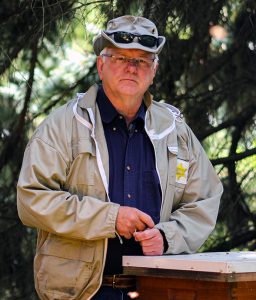Got A Question? He Knows!
by Phil Craft
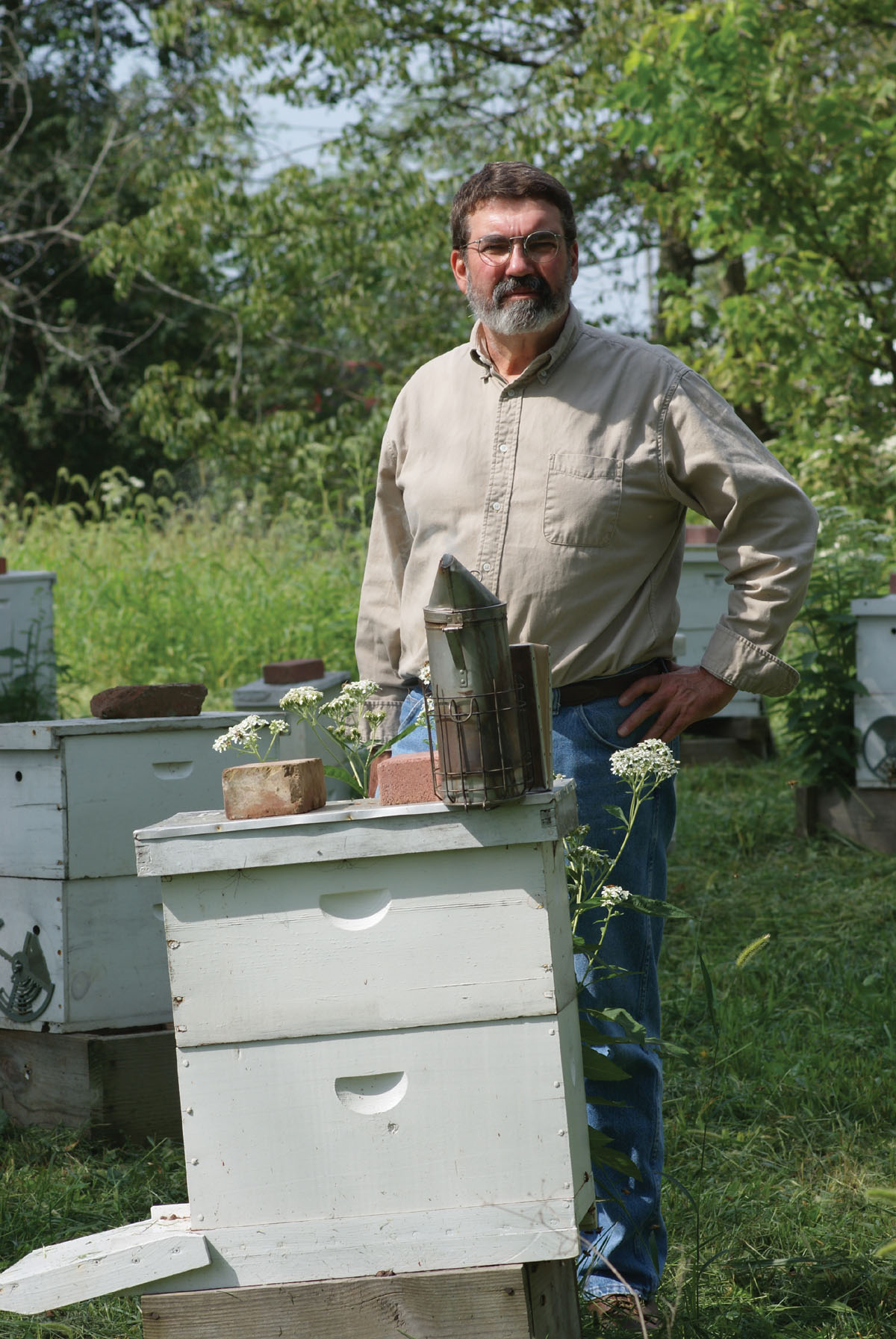
A beekeeper in Nevada writes:
I have a hive that has many earwig inside. Usually on the top when I remove the inner cover. Any real concern?
Phil replies:
Earwigs (order Dermaptera) play a sinister role in folklore, being reputed to purposefully crawl into the ears of sleeping persons for the purpose of entering the brain to lay eggs – hence their name. Fortunately, this is only an old wives’ tale. For beekeepers, they are not normally considered a problem.
The hive is a small ecosystem containing all sorts of macroscopic and microscopic life. Some are the familiar parasites and disease causing organisms which directly attack bees or brood: mites, nosema, foul brood, etc. Others are pests: opportunists such as small hive beetles and wax moths. These are usually nuisances which can cause damage within the hive but are not serious threats unless the colony is too weak to cope with them. A few are merely transients: free loaders just seeking a dry habitat, sometimes subsisting on trash fallen from the frames. Mice are a special type of opportunist. They may enter the hive seeking shelter but, once there, they wreak havoc, destroying frames and comb while consuming pollen, honey, and bees. They are a special threat in winter when they are more likely to seek out a warm, dry nest and the colony is unable to break cluster to defend the hive. I hope everyone has entrance reducers in place by now.
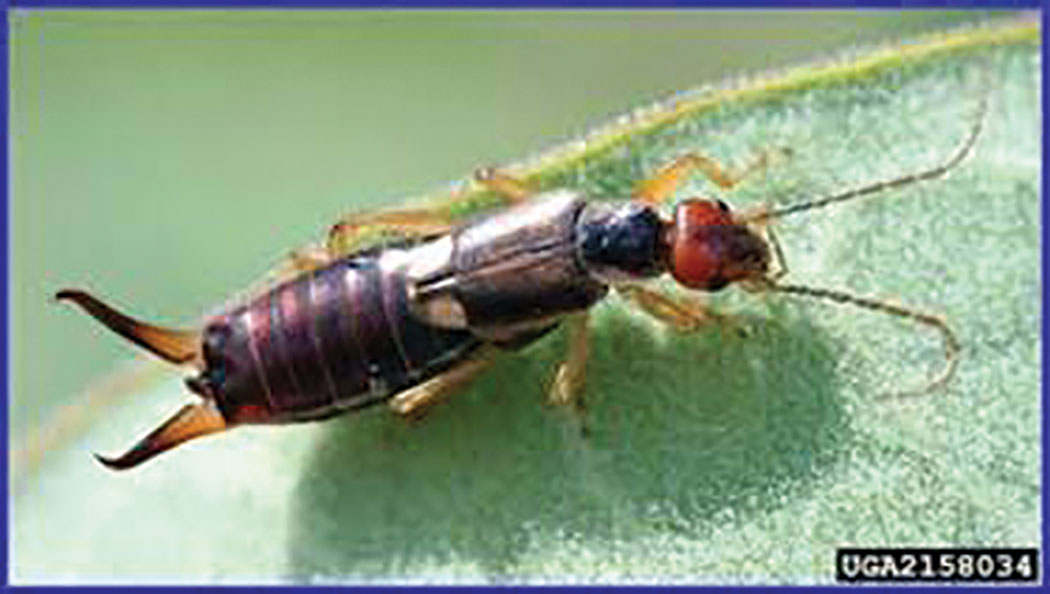
Earwig.
Some transients are unusual. I once knew a beekeeping couple from Western Kentucky who maintained hives both there and in Mississippi. The wife told me that she did not enjoy working their Mississippi hives, because they had encountered more than one snake inside. She had never seen snakes in their Kentucky hives. I am certain they were there after mice or in search of shelter – not to prey on bees. I don’t know what the bees thought about the snakes, but they were an unpleasant surprise for the beekeepers. More typical transients are various types of bugs. These are sometimes found above the inner cover, and more often on the bottom board or in the debris tray in hives with a screen bottom board. Various beetles are common, some of which can easily be mistaken for small hive beetles, but which are harmless. Even though these interlopers are not threats, strong hives will not tolerate very many of them. We tend to see them more in weakened hives and in hives where the bees have died or absconded.
Earwigs and cockroaches (order Blattodea) can be found both on bottom boards and inner covers. These insects look somewhat alike, have similar lifestyles, and are commonly mistaken for one another. I have always classified them in my mind as transients, however your question motivated me to consult my copy of Honey Bee Pests, Predators and Diseases. One of the sources cited in this excellent reference states that earwigs “. . . may pierce cappings and spoil comb sections with excreta, food fragments, and the skins of nymphs.” The book makes similar observations concerning roaches, with the addition of a warning about odor problems. Another source notes that earwigs may carry honey bee diseases, including European foulbrood. It seems that from now on I may have to consider both species as pests rather than transients. As with other pests, the best way to control them is to maintain strong colonies. However, last Summer, I had a new colony die out and I stored the hive bodies which contained some nice drawn comb. There must have been a dozen roaches or earwigs in the boxes. After learning more about them, I may be quicker next time to squash these pests with my hive tool. One other note: if you store comb in used brood boxes inside your house, or any place else where you wouldn’t like to see these insects take up residence, try to brush them off or squash them before moving the boxes inside. Paradichlorobenzene, which is used to control wax moths, will also eliminate roaches and earwigs which emerge after you place the boxes in storage.
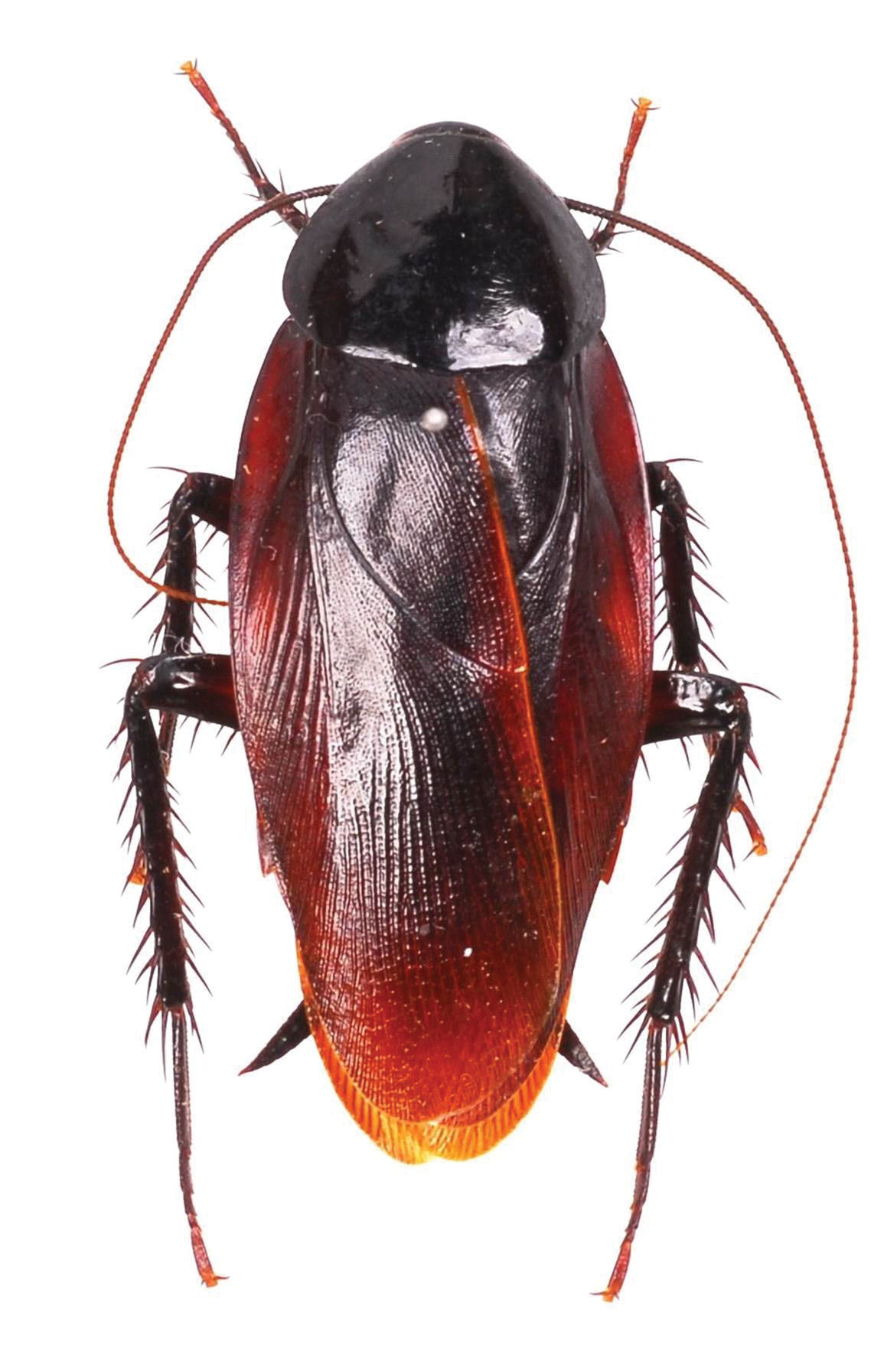
Cockroach.
In my Bee Culture columns I sometimes recommend helpful beekeeping reference books. Honey Bee Pests, Predators, and Diseases, 3rd edition, edited by Roger Morse and Kim Flottum, is a good one. However, be aware that this most recent edition was published in 1997, and suggested procedures regarding the control of some parasites and diseases, including varroa mites and foulbrood, have changed since that date. Small hive beetles are not addressed at all, since they were not discovered in the United States until 1998. Nevertheless, it remains a useful source of information for beekeepers. I frequently consult it for background information on common honey bee health problems, and especially for less common issues, such as earwigs.
A beekeeper in West Virginia writes:
I have an odd question. I know when you put your ear up to the box when it’s cold, you can still hear a hum from the bees. When it’s below freezing, would you hear any hum? (Yes, I have a stethoscope, lol.)
Phil replies:
Honey bees do not go into suspended animation in the Winter. Even when temperatures outside are below freezing, there is activity in the hive, so my first inclination is to say that it should be audible. The possibility of using a stethoscope to do a quick winter time check has also occurred to me but, unlike you, I do not own one, so I have never tried it. After a Google search I confirmed that, even in freezing weather, yes West Virginia there is a hum.
I found several beekeeper’s webpages and one forum discussing how to listen in on the bees when it’s too cold to open the hive. There were some helpful comments by people who reported success along with a few “couldn’t hear a thing” remarks. Some listeners, most of whom worked in health care and had access to them through their jobs, used expensive stethoscopes. Others said cheap ones purchased over the internet worked fine. (A quick check of online prices turned up some for less than $10.) One person even said that a large screw driver with the shaft on the hive and the end of the handle placed against your ear is a sufficiently good conductor of sound. For that matter, as you mentioned, just putting your ear against the hive also works, but could be uncomfortable in really cold weather. There are a few things to keep in mind. Try your eavesdropping on calm day; wind will interfere with your ability to hear. Also, the cluster moves around in Winter, so you might need to listen at several places on the brood boxes. A ventilation hole seems to be a good place to try. Some beekeepers who heard nothing at first got a response after a firm knock on the hive. I would be cautious about trying that too enthusiastically, however, out of concern that it could disturb the cluster.

Photo credit – http://mudsongs.org.
There are other ways of checking on hives in Winter. Dr. Jerry Bromenshenk from the University of Montana has explored the use of infrared cameras for colony assessment. This is assuredly a more informative method and, for commercial beekeepers, more efficient. Those with only a few hives would find it difficult to justify the expense, but might still be interested in learning how much information can be gleaned this way. Watch Bee Culture for a series of articles by Dr. Bromenshenk about technology and beekeeping, beginning in the January issue.
For beekeepers who Winter their hives where temperatures occasionally rise above 50ºF (as it does at my home in Kentucky and yours in West Virginia) the simplest way to check on colony survival is to watch the hive entrances for flight activity during spells of warmer weather. As winter transitions to spring, loads of pollen on returning workers’ legs tell us, not only that the bees are alive, but that they are rearing brood. Be aware, though, that activity at the entrance does not guarantee that a colony has come through Winter successfully. In early Spring or on warm Winter days, honey bees are alert to the lure of food stores remaining in dead colonies. It’s difficult, especially for the inexperienced, to tell whether bees are flying out and back in as part of normal activity, or in and back out in the act of robbing dead or severely weakened colonies.
I understand and share the urge to see whether our colonies are making it through the Winter. I admit to feeling a little thrill each year when I detect the earliest stirrings in my hives. But once cold weather sets in, there is nothing constructive we can do to improve their chances. It’s important that we not let our curiosity and impatience actually put our colonies at risk. Lifting the covers to check on the cluster is OK on sunny days when temperatures begin to climb above the 50º range. I know one beekeeper who uses a flashlight the better to see between the frames. A glance in the top box (normally by late Winter the cluster has moved into the top brood box), without removing frames or lifting off the top box, is sufficient to assess activity and cluster size. More intrusive inspections should wait until daytime temperatures consistently reach 60º. I am always concerned when I hear of beekeepers (usually self-styled experts from the internet) encouraging late Winter or early Spring hive manipulations. Moving frames can disturb the cluster; rearranging them can spread brood out to the extent that the bees cannot keep it warm when temperatures drop again. That wastes resources and delays the build-up of the colony.
Some areas of the country are lucky enough to avoid true Winter. Unless you live in one of them, be content with looking and listening in the coldest weather, and with quick checks early in the Spring. Wait on thorough inspections and invasive management until can count on sustained mild temperatures.
A beekeeper in Arkansas writes:
My bees have been storing a lot of honey, several hives have supers mostly full. I have been treating hives with Apivar during most of September so do not want to harvest any of this stored honey.
At a recent bee meeting I told a friend about all the honey on my hives and he noted to not allow them to become honey bound because they may swarm. Bothered me enough that I have removed about two frames in center of supers to allow room. I use one deep and a medium super for overwintering. Am I worried about nothing or is this a good idea? I have put full honey frames in a freezer so that maybe on a warm day in Winter or before it gets too cold to open hives I can put full frames back in hives for Winter.
I used to feed bees in Fall but that was getting a little expensive, encouraged robbing and I would rather they used stored honey instead of sugar water.
Note: This question was received in October of 2015
Phil replies:
I don’t think you need to worry about swarming at this time of year as long as the bottom boxes contain a few frames with open cells for brood rearing. I have never had a Fall swarm that I know of. You have the advantage of being far enough south that your colonies will rear some brood through the Winter. Newly emerging bees will make up for normal, seasonal population losses and give the colonies a stronger population to build on in the spring. This is one reason it is easier to maintain hives in areas with mild winters.
Though the risk of a swarm is small, a honey bound hive is a possibility. During a good Fall nectar flow, colonies often fill the top brood box. In fact we want them to in order to ensure sufficient food reserves to last until Spring. Since I am further north than you, I use a two deep brood box configuration, because my hives need more stored honey for our longer Winters. In colder climates, three deeps may be necessary. Like you, I prefer not to depend on feeding to build Winter stores unless it becomes absolutely necessary, and I am fortunate that in most years there is an adequate fall flow. I do not collect Fall honey for consumption or sale. I leave it on the hive as part of my contract with my bees. Problems may arise when the upper box or boxes are full and foragers are still bringing in nectar. As long as it continues to be brought in, bees will store it in any available space. With no room above, they will put it in cells where they might be raising brood. That means fewer replacement bees and a scanter population by Spring, and will negate some of the advantage of a mild Winter.
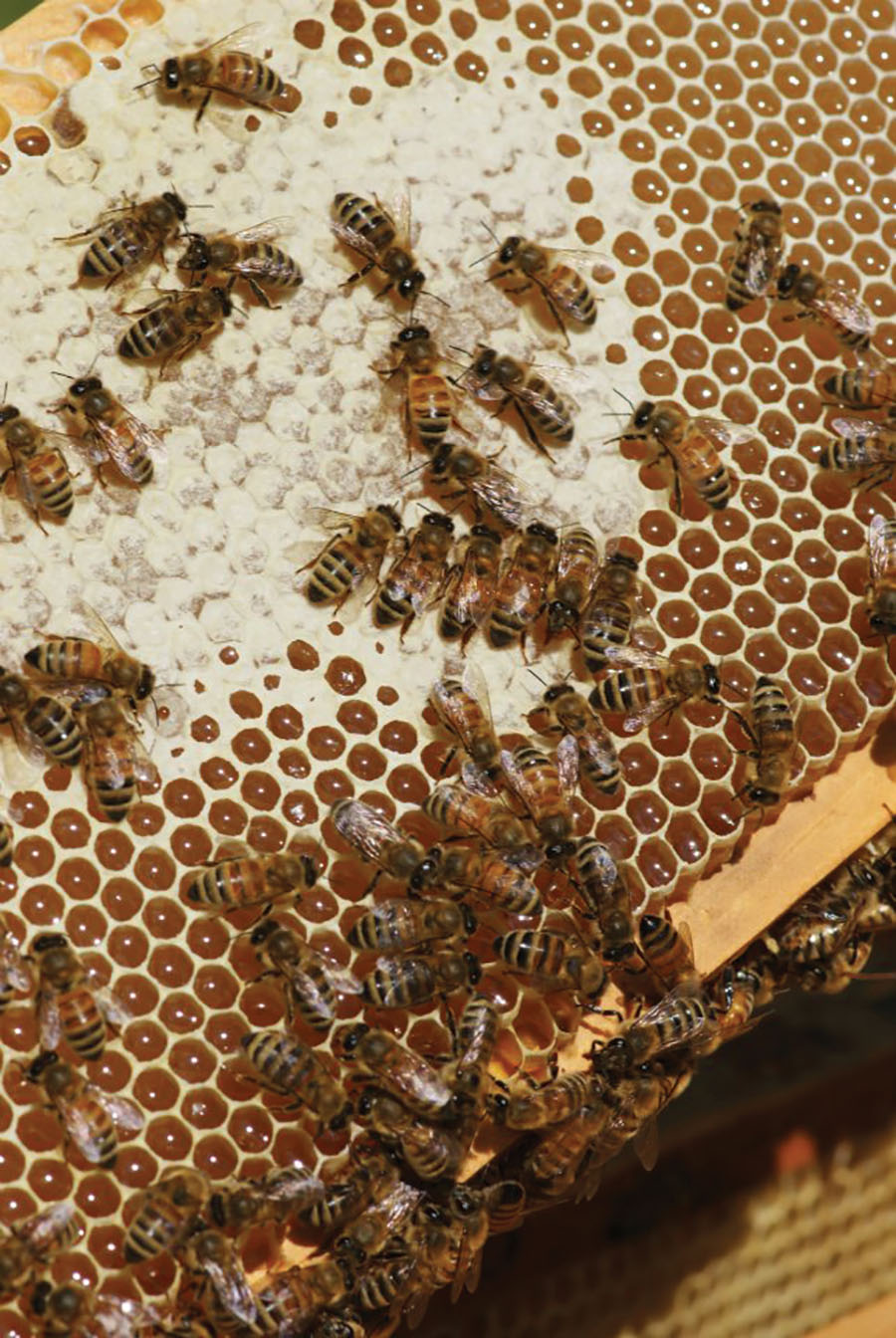
Almost all cases of honey bound hives which I have observed have actually been sugar syrup bound. The worst involved a beekeeper whom I visited one year in mid-June while I was Kentucky State Apiarist. He had contacted me because he was seeing a sharp decline in the number of bees flying in and out of the hives which he had started from packages in early April. My first observation upon seeing the hives was of feeders at the entrances. He was still feeding, though I was aware that there was a very good nectar flow in the area. Upon looking into the top brood box of the first hive, I found all the frames completely full of what appeared to be mostly sugar syrup. Conditions in the bottom box were almost the same, with only very small patches of brood on the centers three frames, the equivalent of what would normally be found on one side of one frame. The lack of foragers was no longer a mystery: the hive was dying out due to the lack of space for brood. Most of the colony’s population had succumbed to old age, and there were too few new bees to replace them. Conditions in his other new hives were the same. He had been advised to feed new packages, but either no one told him when to stop or that instruction had not sunk in.
Swapping frames of empty comb for ones full of honey, as you did, is an excellent management strategy for avoiding a similar situation. With empty cells for nectar in the top box, bees will use the bottom brood box for brood rearing. Be aware, though, that substituting frames of new foundation is not an option, since bees do not readily draw comb in the fall, even during a nectar flow. They would ignore the frames of foundation and continue to place nectar in empty comb in the bottom box. Storing the frames of honey in the freezer for return to the hive if needed later is another good idea. You seem to be doing all the right things: treating for mites, attending meetings, asking questions, and most of all, paying attention to what is going on inside your hives. These are the basics of good beekeeping.
Send your questions to Phil at
phil@philcrafthivecraft.com
www.philcrafthivecraft.com








